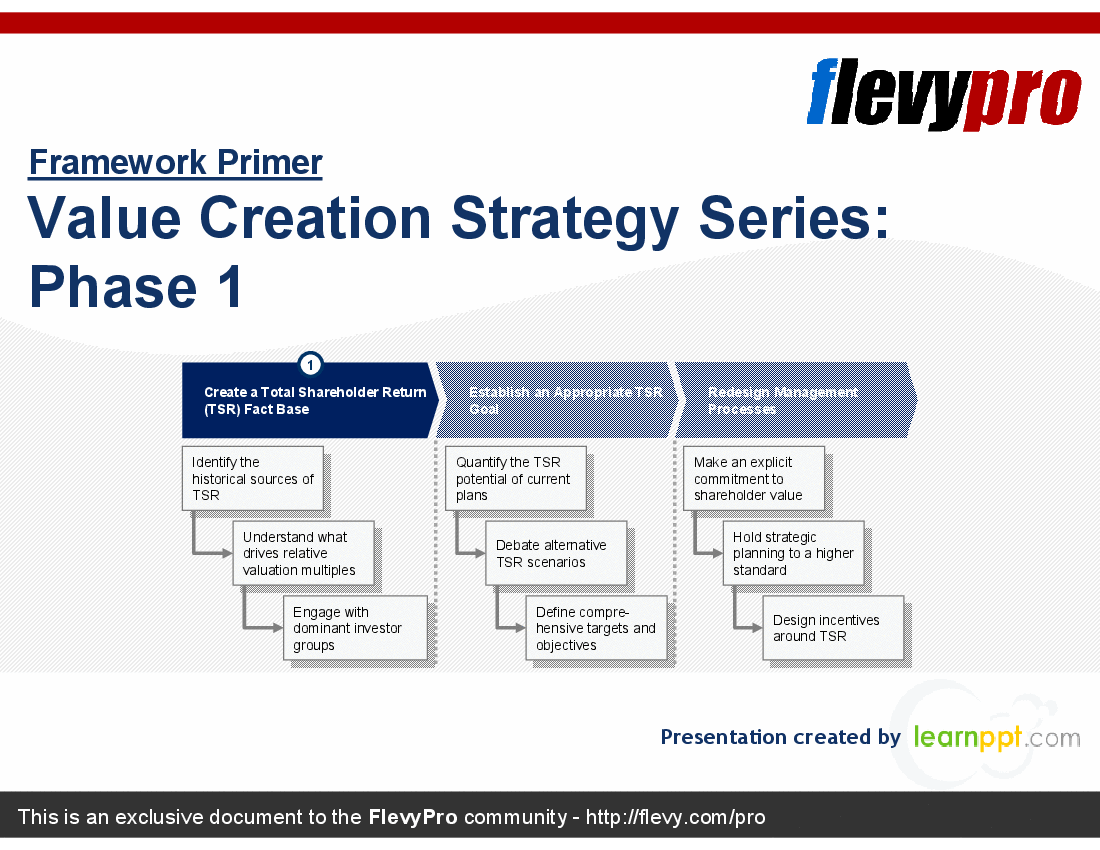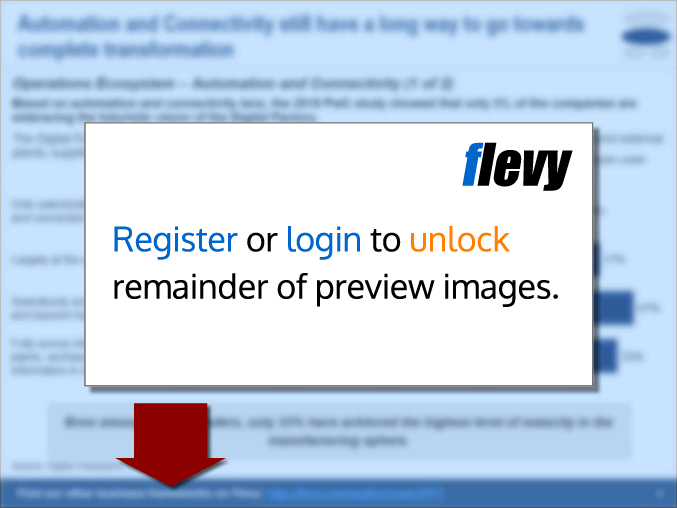Value Creation Strategy Series: Phase 1 (PowerPoint PPT Slide Deck)
PowerPoint (PPT) 23 Slides FlevyPro Document
VALUE CREATION PPT DESCRIPTION
Developing a successful Value Creation Strategy requires a structured process for analyzing the dynamics of value creating in our organization and in our industry. This presentation outlines a 3-phase approach to developing an integrated Value Creation Strategy:
1. Create a Total Shareholder Return (TSR) Fact Base
2. Establish an Appropriate TSR Goal
3. Redesign Management Processes
Each phase can be further subdivided into 3 key steps. In this presentation, we will focus on the first phase, with the following key steps:
1. Identify the historical sources of TSR.
2. Understand what drives relative Valuation Multiples.
3. Engage with dominant investor groups.
Although organizations monitor their Value Creation performance over time, few create a comprehensive TSR fact base.
Additional topics discussed include TSR Drivers, TSR Decomposition Model, TSR Source Identification, and others. This deck also includes slide templates for you to use in your own business presentations.
Phase 1 of the Value Creation Strategy Series delves into the critical task of identifying historical TSR sources. This involves a detailed analysis of dividend yield, share change, and net debt change. By leveraging the TSR Decomposition Model, executives can pinpoint the exact contributions of these factors over a specified period. Understanding these historical sources is fundamental for building a robust TSR fact base.
The PPT also emphasizes the importance of understanding what drives relative valuation multiples. This step is crucial for benchmarking against competitors and identifying areas for improvement. The analysis includes evaluating capital structure and other key drivers that influence valuation multiples. This insight is essential for making informed strategic decisions that enhance shareholder value.
Engaging with dominant investor groups is the final step in Phase 1. This involves identifying and understanding the priorities of key investors who hold significant influence. The document provides a structured approach to engaging with these groups, ensuring that the company's value proposition aligns with investor expectations. This engagement is vital for maintaining investor confidence and driving long-term value creation.
Got a question about the product? Email us at flevypro@flevy.com.
Source: Best Practices in Value Creation, Total Shareholder Value PowerPoint Slides: Value Creation Strategy Series: Phase 1 PowerPoint (PPT) Presentation Slide Deck, LearnPPT Consulting
VALUE CREATION PPT SLIDES
Did you need more documents?
Consider a FlevyPro subscription from $39/month. View plans here.
For $10.00 more, you can download this document plus 2 more FlevyPro documents. That's just $13 each.
This document is available as part of the following discounted bundle(s):
Save %!
Value Creation Strategy - Full Series
This bundle contains 3 total documents. See all the documents to the right.









